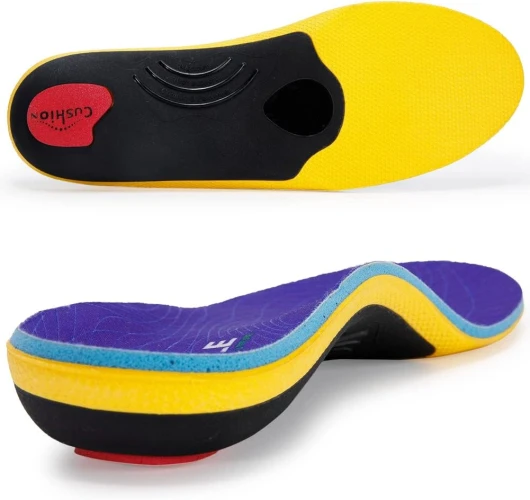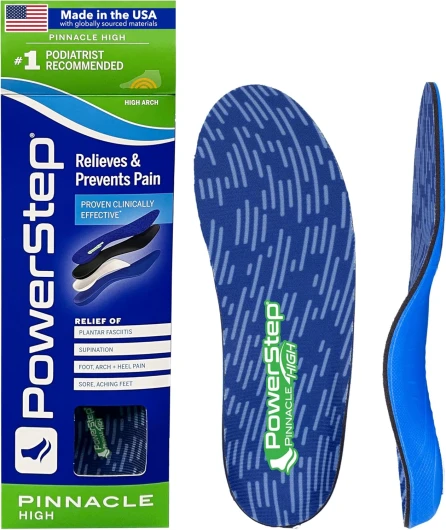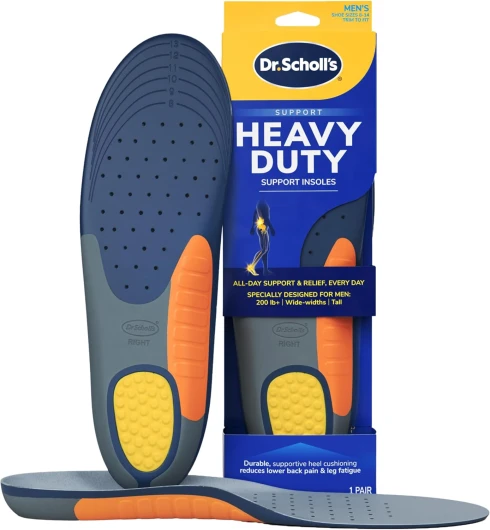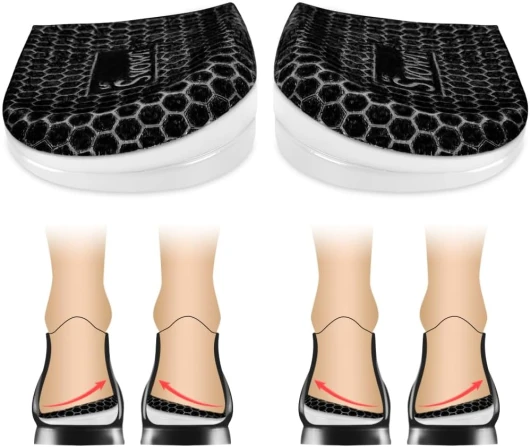
Understanding Supination in Hiking
Understanding the Challenge of Supination
When embarking on the quest for the perfect hike, recognizing how supination affects your feet is crucial. Supination occurs when the body's weight rolls onto the outer edges of your feet, which can lead to discomfort and various long-term issues for avid hikers. This condition, if not addressed, could lead to persistent foot pain, compromised performance, and even injuries that disrupt your adventurous pursuits. Hikers with high arches are particularly prone to supination, as their feet have a natural tendency to tilt outward. This places immense strain on specific parts of the foot, like the heel and ball, without adequate support. Utilizing the right insoles designed for supination can provide the essential arch support and distribute the weight more evenly across the foot. For those seeking guidance on finding the ideal footwear to withstand diverse weather conditions, including winter adventures, insights into exploring the versatility of zipper boots in hiking might prove beneficial. Check out these insights for additional information. In essence, understanding supination is the first step in preventing potential pitfalls on your hiking journeys and finding comfort throughout your treks.The Impact of Supination on Hiking Performance
Recognizing the Effects of Supination on Your Trekking Adventures
Supination, where the foot rolls outward, can significantly affect your hiking performance. If left unchecked, it can lead to discomfort and even injury during long treks. This condition places excess pressure on the outer edges of the foot, often leading to pain and fatigue in the arches and ankles. When hiking, you might notice that your shoes wear out unevenly, with visible signs of damage on the outer edges. That's because supination causes the foot to strike the ground in an uneven manner. This inefficient gait pattern not only compromises your stability but also diminishes the overall support your shoes can offer. Proper arch support and cushioning are crucial to mitigate these effects. Foot pain, specifically in the arches and heels, becomes a common companion for hikers with supination. This can make long hikes challenging and sometimes unbearable. Additionally, the lack of adequate support can exacerbate other foot conditions, such as plantar fasciitis, making it vital to address supination. High arches are often linked with supination, requiring special attention to ensure that hiking boots provide the necessary arch support. Without it, the risk of injury, like rolling an ankle, increases significantly. Therefore, understanding your foot's unique needs, like whether you need orthotic insoles, is paramount to enhance your hiking experience. For more insights on choosing the right footwear, you might find this guide on the best footwear for hallux rigidus particularly useful. It offers valuable information on selecting boots that support your feet during adventurous hikes.Choosing the Right Shoe Inserts for Supination
Finding the Right Solution for Your Feet
Deciphering the array of shoe inserts available for those experiencing supination can seem daunting. However, selecting the best insoles designed specifically for this condition is crucial for achieving comfort and optimal hiking performance. Not only do these insoles provide necessary arch support, but they also address foot alignment issues that can lead to prolonged discomfort if left unmanaged. When choosing insoles for supination, several factors come into play:- Arch and Heel Support: Opt for insoles that offer high arch support and a deep heel cup. These features ensure that your foot remains stable within the hiking boots and alleviate pressure on the foot, particularly the ball of the foot.
- Material and Comfort: Comfort is paramount, and the material of the insoles plays a significant role in this. Look for units made of materials that balance support and cushion, providing comfort throughout long hikes.
- Custom Orthotics: For those unable to find over-the-counter insoles that fit perfectly, custom orthotics might be an investment worth considering. Although they may come at a higher price, the tailored support they provide can significantly enhance the hiking experience, particularly for individuals with very high arches.
- Price and Availability: Balancing unit price with the comfort and support offered by the insole is vital. Even if the best insoles have a price unavailability issue occasionally, seeking alternatives that meet most of the needed criteria can be beneficial.
Benefits of Using Shoe Inserts in Hiking Boots
Maximizing Comfort and Performance with Specialty Inserts
Increases in comfort and performance are often cited by hikers who incorporate shoe inserts, specifically designed for supination, into their hiking boots. These inserts work to provide essential support for your feet, focusing on areas like the arch, heel, and ball foot, which are crucial for stability during hikes over varying terrains. The use of support insoles can provide substantial pain relief for those suffering from issues like plantar fasciitis and high arches. With a deep heel cup, insoles for supination help stabilize the foot, which significantly reduces foot pain and enhances overall comfort during prolonged hikes. Having a custom fit is pivotal, especially for hikers seeking tailored support. Orthotic insoles are often recommended as they are specifically molded to conform to the unique shape and needs of your feet, offering precise arch support and improving overall foot function. While the unit price of custom orthotics can be higher compared to standard insoles, the price difference is justified by the unparalleled comfort and adaptation they provide in addressing specific issues like arches supination. Even though availability might be limited and price unavailable in some settings, exploring the best insoles tailored to your specific needs will ensure that your hiking experience is both enjoyable and free from the unnecessary pain associated with inadequate foot support. Many hikers report that integrating these specialized support solutions transforms their hiking experience, ensuring comfort across long distances and challenging trails. Investing in the right type of insole not only enhances performance but can also extend the longevity of your trusted hiking boots. A variety of options are available, whether you have flat feet or high arches, making it crucial to assess your foot type and personal comfort needs when choosing insoles. Selecting the appropriate insole could very well be the key to maintaining healthy, robust feet ready to conquer any outdoor challenge.
- + High Weight Capacity: Supports individuals over 220 lbs
- + Designed for Pain Relief: Alleviates symptoms of plantar fasciitis
- + High Arch Support: Ideal for flat feet and high arches
- + Shock Absorption: Reduces impact with every step
- + Versatile Use: Suitable for work boots and everyday shoes
Real-Life Experiences from Hikers
First-Hand Accounts from the Trail
Many hikers have shared their experiences with using shoe inserts to combat the challenges of supination. These real-life stories highlight how the right insoles can transform a hiking journey, providing much-needed support and comfort.
One hiker noted that after years of struggling with foot pain due to high arches, the introduction of custom orthotic insoles made a significant difference. The deep heel cup and arch support offered by these insoles provided relief from the persistent pain that had previously marred their hiking experiences.
Another outdoor enthusiast emphasized the importance of choosing the best insoles for their specific foot type. They found that insoles designed for supination not only improved their comfort but also enhanced their overall hiking performance. The support insoles offered stability on uneven terrain, reducing the risk of injury.
For those with flat feet, the transition to using insoles with targeted arch support was a game-changer. These hikers reported a noticeable decrease in foot fatigue and pain, allowing them to enjoy longer hikes without discomfort.
Price can be a consideration, but many hikers agree that the investment in quality insoles is worthwhile. While the unit price of custom orthotics may be higher, the benefits in terms of pain relief and comfort often outweigh the initial cost. For some, finding the right insole was a process of trial and error, but the eventual fit and support provided by the right product were invaluable.
These testimonials underscore the importance of addressing supination with the appropriate footwear solutions. By integrating the right insoles into their hiking boots, many have found a path to more enjoyable and pain-free adventures.
Expert Tips for Maintaining Hiking Boots with Inserts
Preserving the Longevity of Inserts in Hiking Boots
Ensuring the continued effectiveness of shoe inserts for supination in your hiking boots can significantly enhance your trail experience. With proper maintenance, these inserts will offer ongoing foot support, pain relief, and comfort during your journey. Here are some expert tips to help maintain your inserts effectively:
- Regular Cleaning: Regularly clean your inserts to prevent them from accumulating dirt and bacteria, which can cause odor and discomfort. Use a mild soap and water to gently wipe your insoles and dry them completely before reinserting them back into your hiking shoes.
- Inspect for Wear and Tear: Periodically check your supination insoles for signs of wear, such as thinning, frayed edges, or loss of their cushioning properties. If you notice significant wear, it may be time to replace them to continue enjoying optimal foot support.
- Proper Storage: After a hike, remove your shoe inserts to allow them to dry out completely. Store them in a cool, dry place to maintain their shape and integrity. Avoid leaving them in damp or heated areas, which can cause deterioration.
- Rotate Footwear and Inserts: Regularly alternating between different pairs of hiking boots and inserts will help extend the life of both, reducing stress and wear. This will ensure that the support and comfort you rely on remain consistent.
Investing in quality orthotic insoles with adequate arch support and a deep heel cup can make a substantial difference for hikers with high arches or plantar fasciitis. Utilizing custom orthotics may also address specific foot pain needs, offering personalized comfort at a unit price that might seem high initially but will prove worthwhile.

















